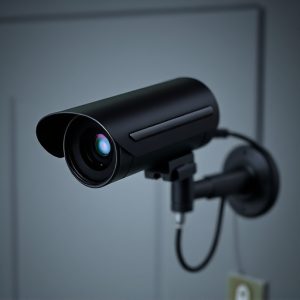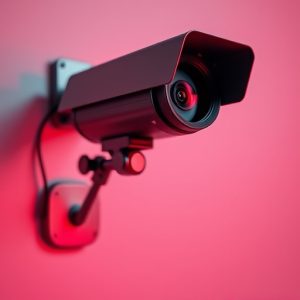Mastering Spy Camera and Microphone Technologies for Discreet Surveillance
When deploying spy cameras and microphones for surveillance, it's crucial to optimize their pl…….
When deploying spy cameras and microphones for surveillance, it's crucial to optimize their placement to ensure they capture high-quality data undetected. This involves strategically positioning them at a height that minimizes interference, ensuring they have clear views with adequate lighting or night vision capabilities, and placing them in locations where they can record clean audio without noise or echo distortions. Directional microphones can be particularly helpful for isolating the desired sounds. Regular maintenance checks are necessary to confirm the devices' functionality and battery status, thus avoiding data loss and ensuring continuous, reliable surveillance. By following these guidelines, you can significantly enhance the quality of the footage and audio recordings obtained from spy cameras and microphones, which is essential for achieving the objectives of any surveillance mission.
In an era where information is power, the role of audio spy devices has become increasingly significant in various fields ranging from security to research. This article delves into the intricate world of spy cameras and microphones, shedding light on their stealthy operations and the technology that powers them. We will dissect the components and capabilities that make these devices indispensable tools for surveillance and data collection, providing insights into how they can be effectively deployed. Join us as we explore the anatomy of these silent sentinels and offer guidance on best practices to maximize their potential in your endeavors.
Unveiling the Stealthy World of Spy Camera and Microphones: A Closer Look
In the clandestine realm of intelligence gathering, spy cameras and microphones play a pivotal role in covert operations. These discreet devices are engineered to blend into their surroundings, often going unnoticed by the unsuspecting subject. The technology behind these gadgets has advanced significantly, enabling them to capture high-quality audio and video with an unprecedented level of clarity. Spy cameras can be as small as a pebble or as innocuous as a household object, hidden within walls or ceilings, or even integrated into everyday items like clocks, smoke detectors, or security cameras. Similarly, microphones have become so compact that they can fit inside a pen, behind a picture frame, or within what appears to be an ordinary wristwatch. The miniaturization of these devices has made it possible for them to record hours of audio and video without drawing attention, providing valuable intelligence from a safe distance.
The integration of these spy cameras and microphones into everyday technology is a testament to the ingenuity of their design. They are often equipped with sophisticated features such as motion detection, night vision capabilities, and wireless transmission, allowing for real-time monitoring and data collection. The potential applications for these devices extend beyond espionage; they are utilized in various fields including law enforcement, security surveillance, journalism, and even domestic settings for personal safety. As the technology continues to evolve, the line between overt surveillance and covert intelligence gathering becomes increasingly subtle, underscoring the importance of ethical considerations and legal frameworks that govern their use.
The Anatomy of a Spy Camera and Microphone: Components, Capabilities, and Operating Mechanisms
Audio spy devices are sophisticated gadgets designed for covert surveillance, often integrating both a camera and a microphone to capture visual and auditory data. The anatomy of such a device typically includes a miniature camera, a high-fidelity microphone, a data storage component, and a transmitter for real-time data transfer. The camera is usually a compact unit with a lens capable of capturing clear images even in low-light conditions. It may employ advanced imaging technologies like night vision or thermal imaging to function effectively in various environments.
The microphone within these devices is equally precise, often featuring noise-cancellation technology to isolate and record clear audio, even in settings with a significant ambient sound presence. This ensures that the captured sounds are intelligible and can be analyzed without interference from background noise. The integrated data storage allows for the temporary saving of recorded material, providing a buffer if the device needs to maintain a covert operation away from immediate transmission capabilities. The operating mechanisms of these devices often rely on battery power, with some advanced models equipped with energy-saving modes to extend operational life. Additionally, they can be activated manually or remotely, allowing for flexibility in surveillance operations. These tiny yet powerful spy cameras and microphones are engineered to blend into their surroundings, remain undetected, and provide high-quality intelligence-gathering capabilities.
Deploying Spy Cameras and Microphones Effectively: Tips and Best Practices for Surveillance and Data Collection
When deploying spy cameras and microphones for effective surveillance and data collection, it is paramount to consider the environment and the objectives of the operation. Optimal placement of these devices is crucial for capturing clear and usable footage or audio. Firstly, ensure that the spy camera is positioned with a clear line of sight to the area of interest while minimizing the potential for it to be detected or disturbed. Cameras should be placed at heights that prevent direct line-of-sight interference from passersby or objects that may obstruct the view. Additionally, cameras must have adequate lighting or be equipped with night vision capabilities to ensure high-quality imagery in various lighting conditions.
Similarly, microphones must be strategically positioned to capture audio without introducing noise pollution or echoes that could distort the quality of the recording. The orientation and distance from the sound source are significant factors; microphones should be close enough to capture the desired audio while avoiding pickup of background noise. It’s also advisable to use directional microphones if the aim is to focus on specific sound sources. In terms of data collection, ensure that both cameras and microphones have reliable storage solutions with sufficient capacity. Regularly check the devices for functionality and battery life to prevent data loss. By adhering to these tips and best practices, you can effectively deploy spy cameras and microphones to gather valuable surveillance footage and audio recordings for your operational needs.


